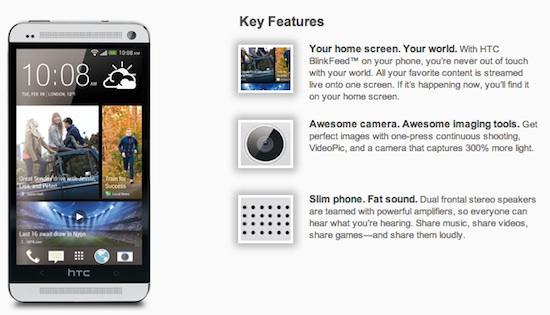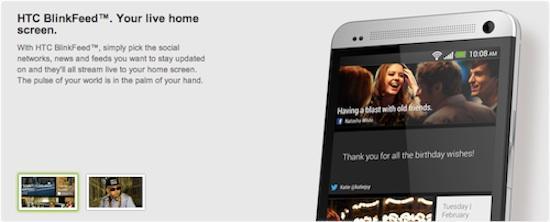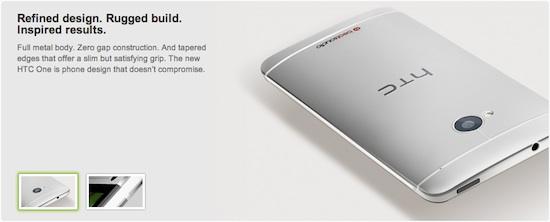
And so it begins. The comparisons. The "I want it, and I want it now" arguments. The importance of hardware and design in justifying a handset's $800 price tag, at the sacrifice of durability. It's a double-edged sword, this industry.
Yet, this is shaping up to be the most exciting year in mobile tech that I can recall. Between the outrageous rumors, candid interviews, and software updates that are bound to happen, we are staring straight down the barrel of all that is exciting and new for 2013.
I'm not talking about the freedoms like new smartphone names or budget-friendly devices that come along with all rumors; I'm talking about the characteristics of devices that are "new" and "innovative," with no track-record in the the volatile mobile market.
I feel like this kid.
But before I delve too deep into my perspective of 2013, first things first, I'm happy with the HTC One. It might be "The One" (sorry, honey). To say it's not a masterpiece of craftsmanship and design would be biased. Having the One at AT&T, T-Mobile, and Sprint is going to be stupendous for HTC who has been under tremendous pressure to release another masterpiece like the Nexus One, or HTC Evo 4G. No longer will consumers be forced to choose between carrier exclusive devices like HTC's past efforts with the One X on AT&T, the EVO 4G LTE on Sprint, and the One S on T-Mobile.
Having a single device on (almost) every carrier just makes sense.
HTC's One also fits into 2013 nicely. It has an SLCD3 1080p display and Qualcomm's latest Snapdragon 600 quad-core processor. The One is made out of aluminum and has new marketable features like HTC Zoe, a new camera software that snaps a 3-second video in lieu of a traditional picture. HTC is betting on the idea that your camera gallery isn't as good as it can be and hopes that consumers will enjoy seeing quick "snip-its" of videos. To say HTC cares about your memories would be an understatement - they're making them for us.
In fact, HTC's paramount presence in 2013 is what I'd like to outline…with a twist, because it wouldn't be as fun to describe something I want without first discussing the trends we are witnessing firsthand with HTC's new flagship.

The plight of the early adopter is a constant battle for euphoria. In mobile, there is no bad time to release a device so as long as it sells. But as a smartphone fan, there are definitely better times to release a new flagship.
Like the original HTC Evo 4G on Sprint. That was a good time to market display size, a kickstand, and 4G-connectivity. No other smartphone could rival it in 2010. It sold very well.
Yet, the market has changed. Gone are the days of clear differences between smartphones and their hardware features. The 2013 keywords are 1080p, quad-core (Dare I say octa-core, too?), non-removable, and fluidity. Put them all in one sentence and you have a flagship device. If you leave one out, you're in trouble. In a sense, we're witnessing the elimination of "features" since everyone is adopting them.
As we break the cusp of a new season of smartphones and sales pitches, there are fewer reasons for devices to be differentiated. In a way, the industry is better off with a set of standards. It makes choice less brutal in the long-run when you can go into any of the four major wireless carriers and walk-out with comparable phones.
This is where timing comes in. As an HTC fan, my decision is clear. If I want the best smartphone made by everyone's favorite Taiwanese smartphone manufacturer, I'm going to go with the HTC One. But what if I don't? Is there a reason to wait? What if a better phone comes out? Is there going to be an iPhone 5.5S?
HTC, meet Timing, the bearer of every manufacturer's innate tendency to want to be first, and their unparalleled enemy to what's coming soon.
And readers, meet Features, like BoomSound, BlinkFeed, and Zoe, all of which make as much sense as Banana Phone does out of context.
Features are those things that Apple has sold consumers for the better part of the iPhone's lifespan. iSight, FaceTime, and iTunes. Advanced, ultrafast, EarPods, and Retina Display.
They're buzzwords and that's where the mobile market is headed. We most recently caught a glimpse of the power a brand plays with the Galaxy S III last year. Burst Shot, S Beam, and HD Super AMOLED were marketed like no other and proved effective, nearly dethroning the iPhone 5 as the best-selling handset in every quarter of 2012.
If Samsung is any sign of what's to come, it's HTC who has the most to gain with effective marketing of their new features of Sense 5. It's looking set to be a good year for HTC if Apple, Motorola, and Samsung can't market similarly. I'm excited to see how the HTC One stacks up against Apple and Samsung's hero devices.

And I'm bummed. There's a reason Aaron Baker includes benchmark tests like Quadrant Standard in his review videos: they're relevant. But in 2013, it's looking like every flagship device will score 12,000 on Quadrant Standard and record 1080p videos at 30 frames per second. So, now what?
Well, as long as we can use our devices as they're intended to, the sky is the limit. Or that's what I'm led to believe with Sense 5 and personalization.
It's the year of fluidity. And the only way we can compare our phones is by looking across the aisle at the chick in red. Her name is Apple and she's not Gwyneth Paltrow's daughter.
The iPhone's hardware has long complemented it's software. When at times it seemed it wasn't quite enough, we were forced to step back and analyze why Apple made the choices it did. Look no further than Apple and Google's bout in the Maps-saga. Regardless, iOS is arguably one of the most simple to navigate and "customize." And it sells like water in the Sahara.
Unfortunately, the oasis is no longer as clear as it once was for Apple. HTC is taking notes on their success. They're moving away from stock Android and addressing the needs of the average consumer with Sense 5. BlinkFeed aggregates news and social media into a simplistic stream. It's the main page on your new HTC One. It's the One page they want you to see when you unlock your phone. It's okay if you blink...because it's always there.
In fact, it's so simple that they didn't even address stock Android's shortcomings. HTC simply trusts that you'll just use BlinkFeed. A quick swipe to the right reveals a stock home screen not unlike one you'd see on any other Android device running version 4.2 Jelly Bean. Dare I say it's akin to stock Android you'd find on a Nexus 4, but with a digital clock widget and HTC's new icons?
Oh, yes I did.
So, do we need BlinkFeed? No. Yet, I'm inclined to think Sense 5 is a rather bare bones approach to mobile computing, like iOS. The fact that we no longer have a traditional homepage might seem simple even compared to iOS.
But aren't people wondering why iOS still looks the same? Is a 6.5-year old operating system a good benchmark when personalization and software features are looking like the true differentiators between devices in 2013?
I believe so, which is why I also believe HTC's hardware will draw enough attention in lieu of its simplistic software. The aluminum unibody construction is stunning. The edges are glossy and the back looks matte. The HTC One is a triumph in aesthetic appeal. Just don't keep your case too far away because it looks damn fragile.
What do you think about 2013 so far? If you had to judge HTC's new hero device, the One, would you say it's appropriately attacking the year with its features and hardware? Or is HTC playing it too close to the chest with its simplistic approach to mobile computing? One thing's for sure, the HTC One is gorgeous and Sense 5 is looking amazingly simple to use. I'm just concerned it might not be the right time to rest your laurels on the approach harbored by Apple, a company with a proven following and competitive marketing team. Let me know how you feel about 2013 and HTC in the comments below!
Images via HTC.